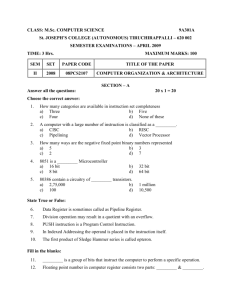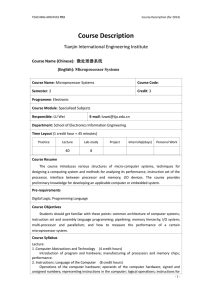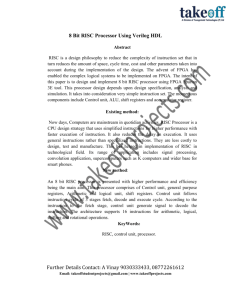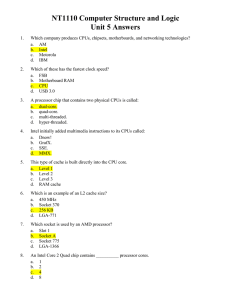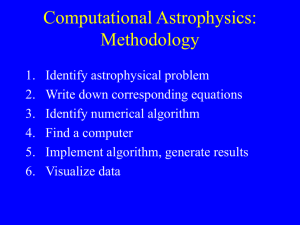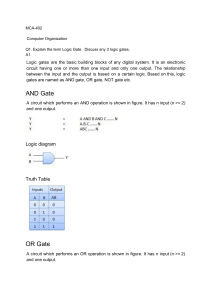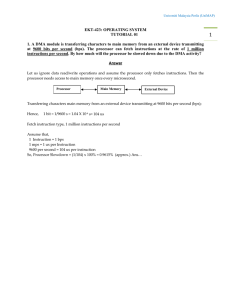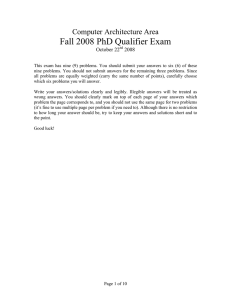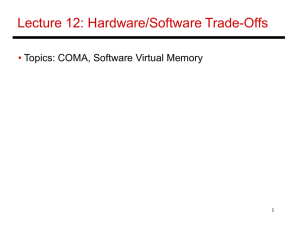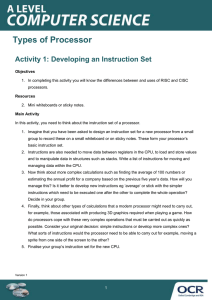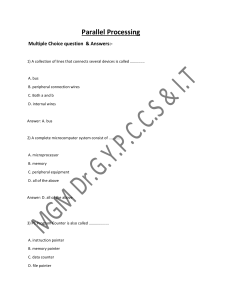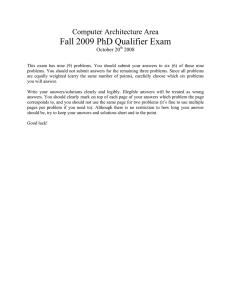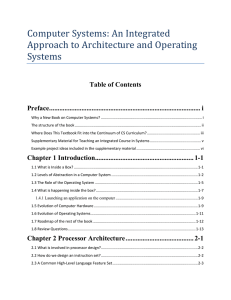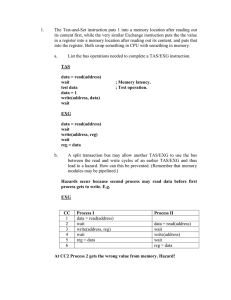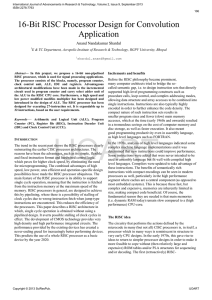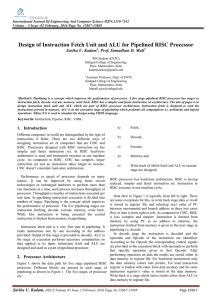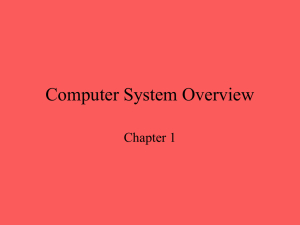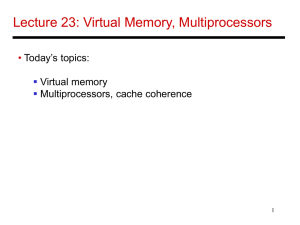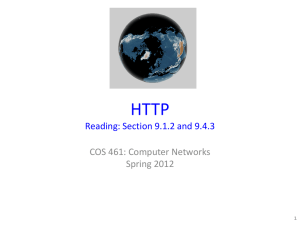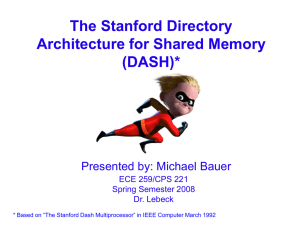Läsanvisningar Datorarkitektur - TDDI 68
advertisement
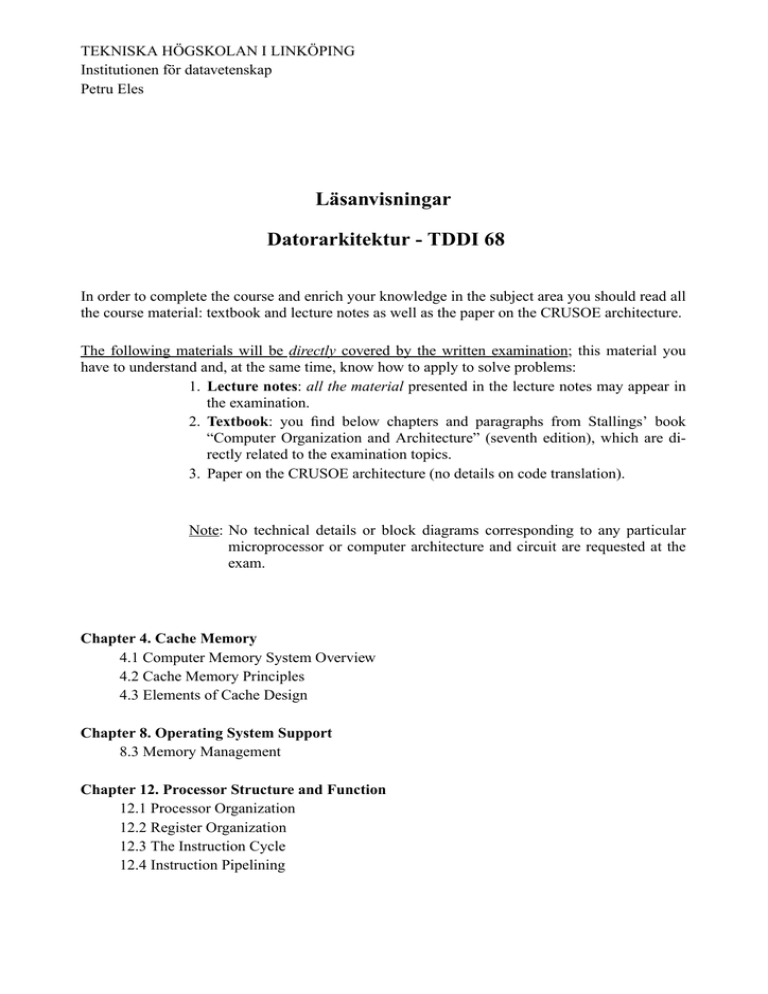
TEKNISKA HÖGSKOLAN I LINKÖPING Institutionen för datavetenskap Petru Eles Läsanvisningar Datorarkitektur - TDDI 68 In order to complete the course and enrich your knowledge in the subject area you should read all the course material: textbook and lecture notes as well as the paper on the CRUSOE architecture. The following materials will be directly covered by the written examination; this material you have to understand and, at the same time, know how to apply to solve problems: 1. Lecture notes: all the material presented in the lecture notes may appear in the examination. 2. Textbook: you find below chapters and paragraphs from Stallings’ book “Computer Organization and Architecture” (seventh edition), which are directly related to the examination topics. 3. Paper on the CRUSOE architecture (no details on code translation). Note: No technical details or block diagrams corresponding to any particular microprocessor or computer architecture and circuit are requested at the exam. Chapter 4. Cache Memory 4.1 Computer Memory System Overview 4.2 Cache Memory Principles 4.3 Elements of Cache Design Chapter 8. Operating System Support 8.3 Memory Management Chapter 12. Processor Structure and Function 12.1 Processor Organization 12.2 Register Organization 12.3 The Instruction Cycle 12.4 Instruction Pipelining Chapter 13. Reduced Instruction Set Computers 13.1 Instruction Execution Characteristics 13.2 The Use of a Large Register File 13.4 Reduced Instruction Set Architecture 13.5 RISC Pipelining 13.8 The RISC versus CISC Controversy Chapter 14. Instruction Level Parallelism and Superscalar Processors 14.1 Overview 14.2 Design Issues Chapter 15 The IA-64 Architecture 15.1 Motivation 15.2 General Organization 15.3 Predication and Speculation(not Software Pipelining) Chapter 18. Parallel Processing 18.1 Multiple Processor Organization 18.7 Vector Computation (no IBM 3090) Don’t forget lecture one!!! There we discussed several issues which are supposed to be known by you from previous courses you have taken. If this is not exactly the case for you, you have to look into one or several of the following chapters: Chapter 2. Computer Evolution and Performance 2.1 A Brief History of Computers 2.2 Designing for Performance Chapter 3. A Top-Level View of Computer Function and Interconnection 3.1 Computer Components 3.2 Computer Function 3.3 Interconnection Structures 3.4 Bus Interconnection Chapter 5. Internal Memory 5.1 Semiconductor Main Memory Chapter 6. External Memory 6.1 Magnetic Disk 6.3 Optical Memory 6.4 Magnetic Tape Chapter 7. Input/output 7.1 External Devices 7.2 I/O Modules 7.3 Programmed I/O 7.4 Interrupt-Driven I/O 7.5 Direct Memory Access 7.6 I/O Channels and Processors Chapter 10. Instruction Sets: Characteristics and Functions 10.1 Machine Instruction Characteristics 10.2 Types of Operands 10.4 Types of Operations 10.6 Assembly Language Chapter 11. Instruction Sets: Addressing Modes and Formats 11.1 Addressing 11.3 Instruction Formats Chapter 16. Control Unit Operation 16.1 Micro-operations 16.2 Control of the Processor 16.3 Hardwired Implementation Chapter 17. Microprogrammed Control 17.1 Basic Concepts 17.2 Microinstruction Sequencing The maximal number of points for the exam will be 40. In order to pass the exam you have to collect a total of minimum 21 points.

